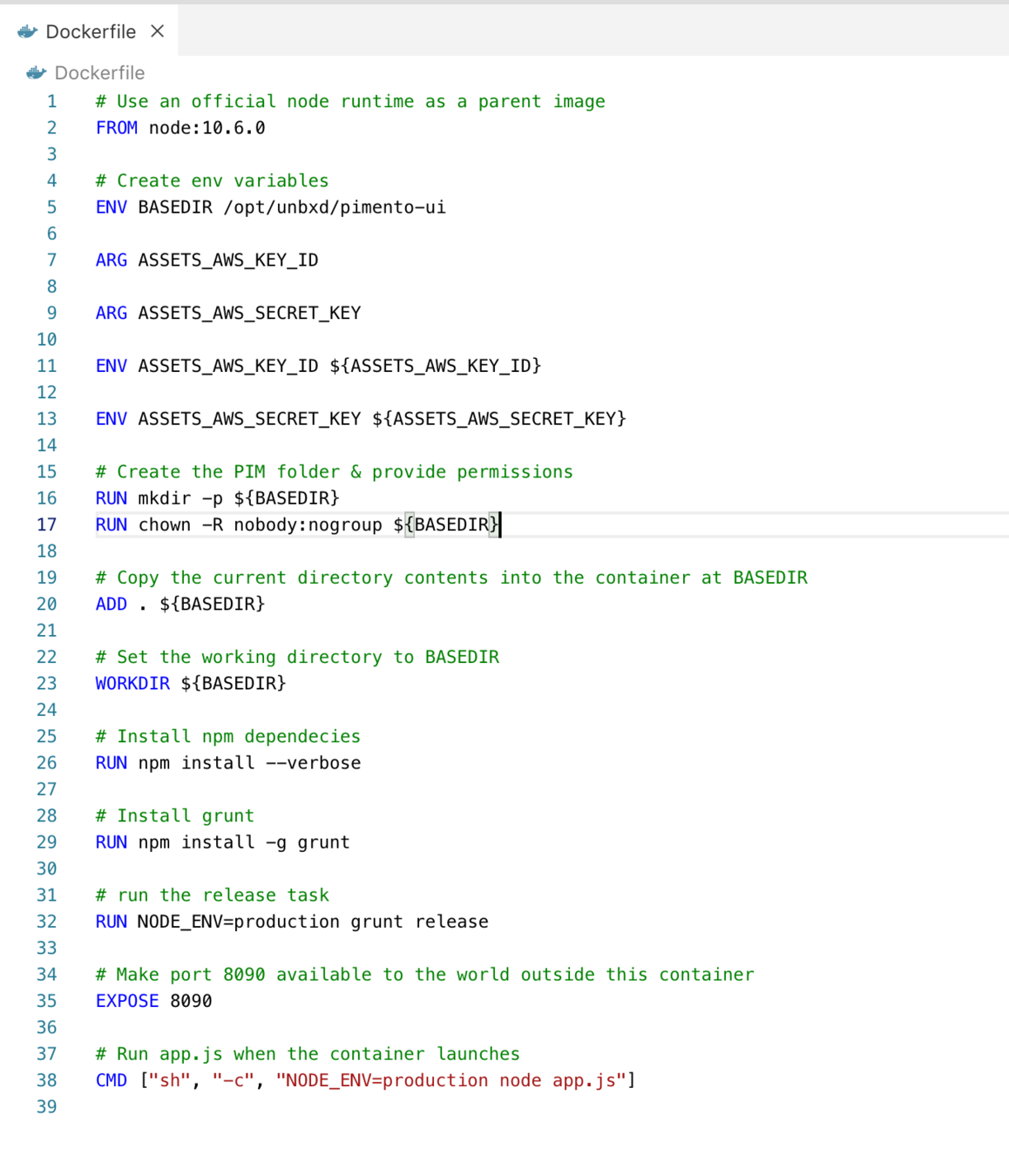Docker for front end engineers
Anupama H
@anuhosad


Agenda
@anuhosad

- Web applications lifecycle : build, test & deploy
- Problems with deployment
- What is Docker & what does it solve
- Dockerize an app
- Test the dockerization
- Build flow with Docker
Web App Lifecycle
@anuhosad

- Choose a technology stack & build the app
- Locally host the app during development
- Once complete, deploy on servers for QA testing & prod push
- Manually login to server machine, install required things (like node JS, nginx, git etc.)
- git clone & start server (maybe using forever js)
Problems with deployment
@anuhosad

- Need to manually install all libraries required on the server
- Might not be the same environment as you are used to (mac vs a linux machine)
- Need to repeat same steps if required to deploy on multiple machines
- No easy way to rollback a release in case of issues
Problems with deployment
@anuhosad


When the QA person finds a bug
Well, it works on my machine ;-P
What is Docker
@anuhosad

From wikipedia:
Docker is a set of platform-as-a-service products that use OS-level virtualization to deliver software in packages called containers. Containers are isolated from one another and bundle their own software, libraries and configuration files; they can communicate with each other through well-defined channels. "
How does Docker help
@anuhosad

- Define the exact system configs that you require
- Define the exact version of libraries that you need to be installed
- Describe the set of steps to run to deploy your application
- Exact same application with same environment will be deployed on all servers
Docker Overview
@anuhosad

APP
Dockerfile
Docker Image
Container
Container
Container
Build
Run
Docker Terminologies
@anuhosad

Dockerfile
Docker Image
Container
Set of instructions on how to build the image. Define the images to include, commands to run etc.
Similar to an exe file, contains the executable app
Instance of an image. The app is running inside the container.
Docker Terminologies (contd..)
@anuhosad

Container
APP
ENV Variables
Libraries
p
o
r
t
Dockerize an app
@anuhosad

Define a Dockerfile at the root of your project folder

@anuhosad

Define each image that you want to be included along with its version
FROM node:10.6.0Pulls packages from Docker hub
Dockerize an app (contd..)
@anuhosad

Add any required environment variables which will be available inside the container
ENV BASEDIR /opt/unbxd/pimento-ui
ARG ASSETS_AWS_KEY_ID
ARG ASSETS_AWS_SECRET_KEY
ENV ASSETS_AWS_KEY_ID ${ASSETS_AWS_KEY_ID}
ENV ASSETS_AWS_SECRET_KEY ${ASSETS_AWS_SECRET_KEY}Dockerize an app (contd..)
@anuhosad

Specify the commands to run when the image is being created
# Install npm dependecies
RUN npm install --verbose
# Install grunt
RUN npm install -g grunt
# run the release task
RUN NODE_ENV=production grunt releaseDockerize an app (contd..)
@anuhosad

Expose the port on which you can access the application running inside docker
# Make port 8090 available
# to the world outside this container
EXPOSE 8090Dockerize an app (contd..)
@anuhosad

Specify the commands to run when the container is launched
# Run app.js when the container launches
CMD ["sh", "-c", "NODE_ENV=production node app.js"]Dockerize an app (contd..)
@anuhosad

Download docker app for mac / windows: https://www.docker.com/get-started
Test the Dockerfile
Start the docker daemon
Build docker image
@anuhosad

docker build -t <appname> .Run the below command inside the app directory where the Dockerfile is created
Check that image has been created by running following command
docker image lsRun docker image
@anuhosad

docker run -d -p 3000:8090 <appname>Run the docker image using the following command
-d => runs the docker image in the background
-p => maps host port 3000 to container port 8090, so that you can access the docker application at localhost:3000/
docker psList docker containers
Other docker commands
@anuhosad

docker exec -it <container ID> bashEnter into the docker container
docker rmi <image ID>Remove docker image
docker rm -f <container ID>Remove docker container
Demo Time
@anuhosad

Build flow with Docker
@anuhosad

Service X
Dockerfile
Container
Build
Run
Web App
Dockerfile
Dockerfile
Service Y
Docker Image
Build
Build
Container
Run
Container
Run
D
o
c
k
e
r
H
u
b
S
E
R
V
E
R
S
Versioned images for easier rollback
Docker Image
Docker Image
References
@anuhosad


@anuhosad
